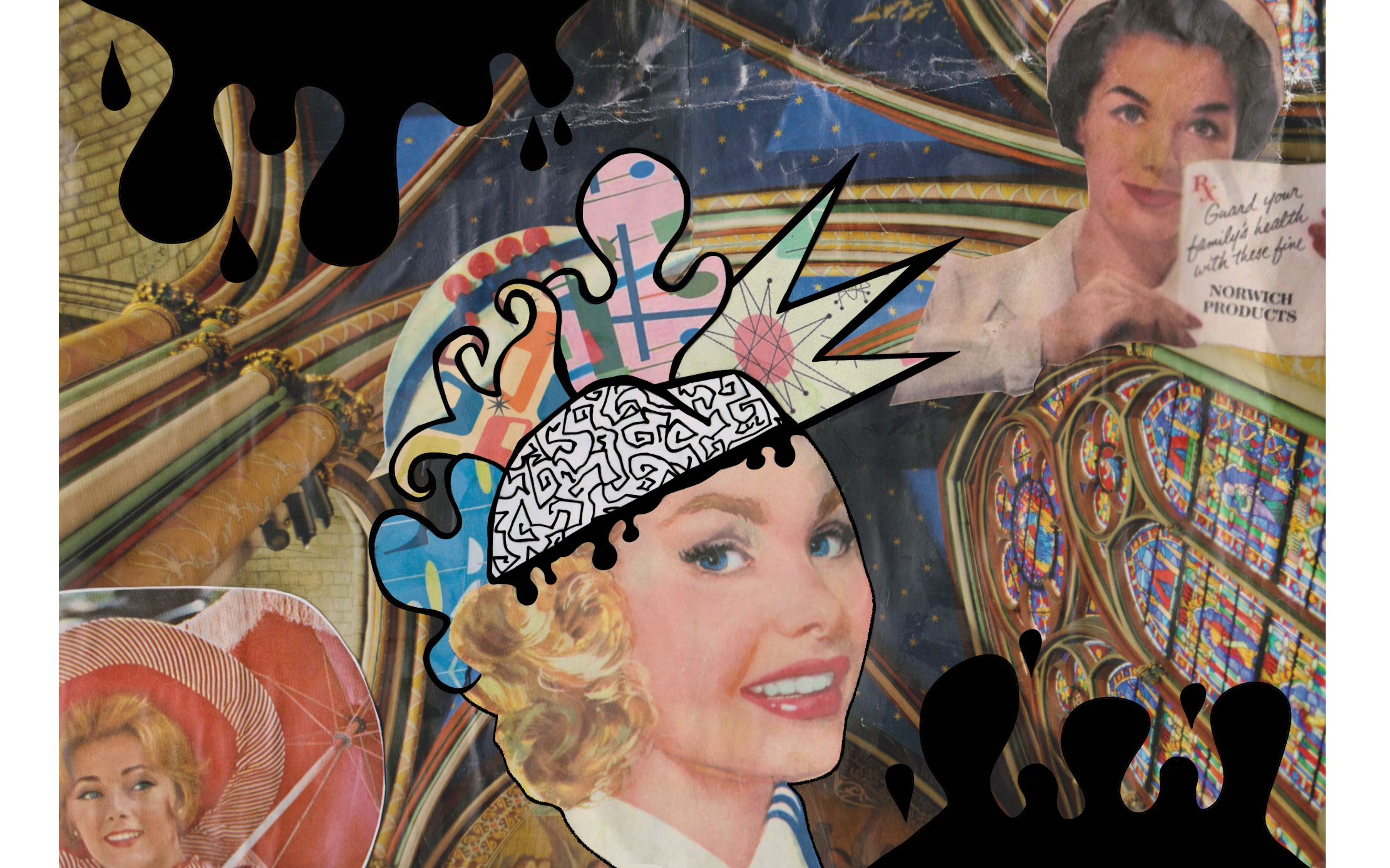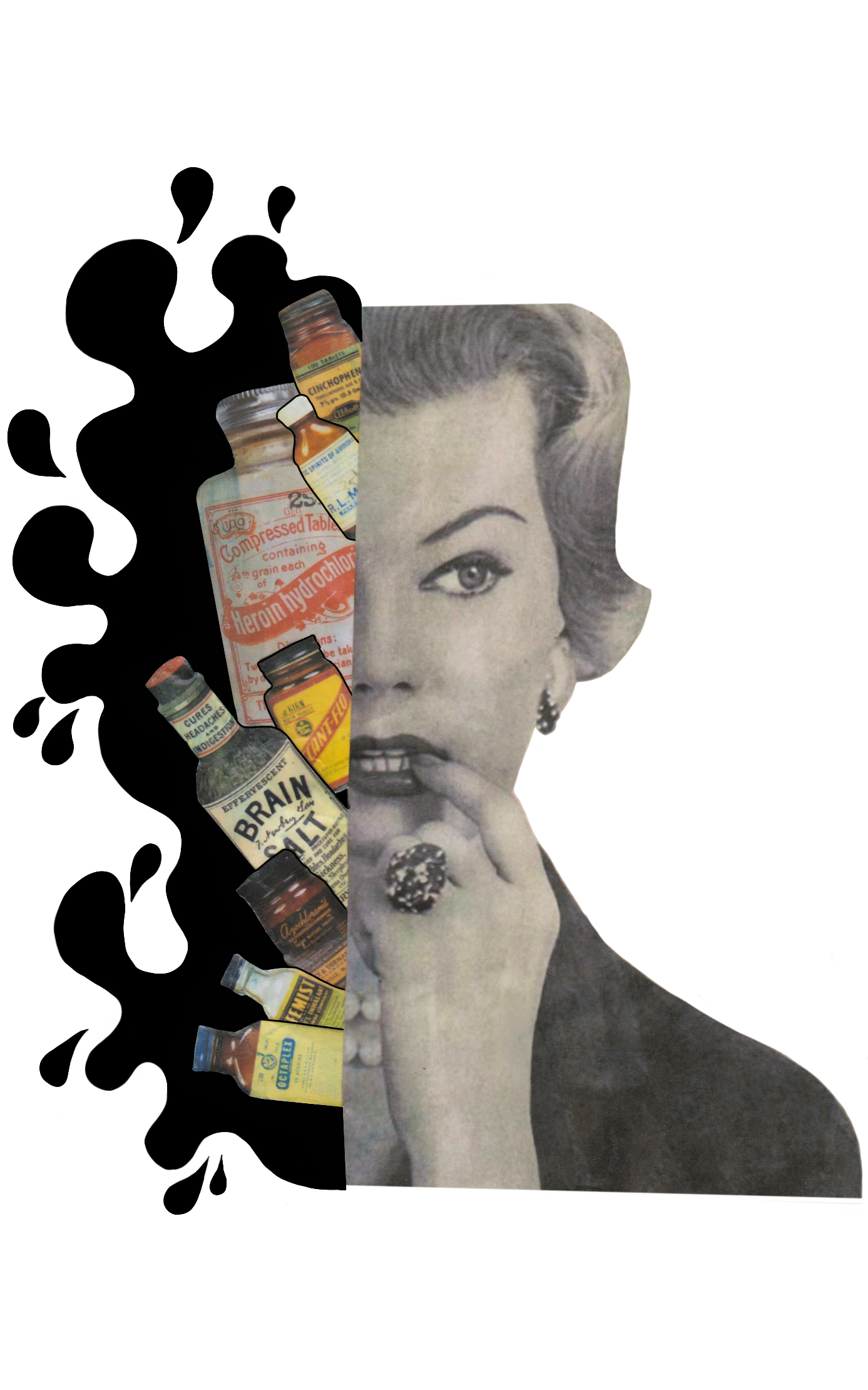Introduction
Psychosis can uproot the life you once knew. This fact is displayed all too well in the case of Grohl, a young man who came to define himself as socially flourishing and creative, before schizophrenia broke his tether with reality [1]. One aspect of Grohl that was most harmed was his emotionality. Prior to his diagnosis, he had no described history of mental health troubles. But when symptoms began appearing after high school, he became withdrawn and started resorting to substances. His prolonged substance use developed into a disorder, and he eventually began to take out his verbal and physical aggression on those he loved most, depleting his social connections. As the course of his disorder progressed, he became consumed by his lack of emotions and a diminished pleasure in life. Grohl’s symptoms illuminate the wide range of emotional impact that schizophrenia, the disorder most associated with severe psychosis, has on an individual [1].
One of the most critical reasons psychosis has a detrimental impact on the sufferer is because of its disturbance of emotional processes. Emotions are one of the primary elements that define who we are. Our ability to understand and control our emotions through contextual assessments and management strategies help ground us to reality. However, when this emotional regulation is not present, it can play a crucial role in increasing the likelihood, severity, and course of psychotic experiences [2]. Psychotic experiences exist on a large continuum, but it has been identified that the more severe the experience(s), the greater the difficulty maintaining control of one’s emotions. As a result, there becomes a disconnect with mental tools and how to use them. This disconnect in turn exacerbates psychotic symptoms by limiting feelings of self-efficacy and one’s ability to form social connections [2].
Emotional Regulation in the Brain
Emotional regulation can be defined as the individual’s capacity to deploy strategies to understand and respond to their current emotional state [3]. There are multiple brain areas associated with this process, including the amygdala, anterior cingulate cortex (ACC), and limbic system structures, governed by the prefrontal cortex. We can think of these respective brain areas as a car. The amygdala receives raw and unfiltered emotional stimuli, such as that from watching a sad movie, and acts as the gas pedal. Calculated decisions based on emotional input that are weighed through social acceptance, personal values, and other cognitive filters take place in the prefrontal-cortex-controlled limbic structures and act as the brakes in the car. The driver of the car is the ACC, which serves as the facilitator between the primary processing of emotional stimuli (gas) and its regulated cognitive interpretation and expression (brakes).
The driver is believed to contain a front and back portion that determines the rate of gas pressing versus brake pressing tendencies. If the driver is controlled by the front portion, they will tend to press the gas, leading to a greater display of emotions. On the other hand, if the back portion controls the driver, they will press the brakes and maintain control over their emotions [4].
Emotional Regulation and its Impact on Everyday Life
In much of the literature on emotional regulation, there are thought to be two cognitive strategies to control emotional affect: reappraisal and suppression [5]. Reappraisal refers to one’s capacity to manipulate an emotional stimulus to control its effects and make it more palatable, which is thought to be adaptive. Suppression, on the other hand, is regarded as the maladaptive internalization of an emotional stimulus by reducing or even hiding its initial impact [5]. However, this binary conceptualization has its drawbacks in being too rigid for the variance of emotional situations. To counter this, researchers Bonnano and Burton proposed a theory of ‘regulatory flexibility’ [6]. Regulatory flexibility accounts for the contextual differences that arise in assessing regulation strategies through the three mechanisms of context sensitivity, repertoire selection, and attention to feedback.
The process of regulatory flexibility follows the respective order of mechanisms: first, evaluating the situation at hand and what it requires from you, then choosing one of your known strategies based on what you see as best fit, and finally reassessing based on feedback to determine if you should continue or switch the current strategy. We can think of this like deciding the best route to drive home: first you consider the current road conditions, time of day, and traffic, then you look at the routes that will get you home fastest and safest, and finally you take the route you believe will give you the best success and switch if you need to. When effectively done, regulatory flexibility gives an individual greater control over their reaction to an emotional event no matter the context, bringing in feelings of self-efficacy, which boosts confidence in handling individual and social events [6]. It is in the incorrect deployment or lack of completion of all three steps of regulatory flexibility where those with psychosis likely fall short in reading the emotional situation and end up resorting to ineffective strategies.

What is Psychosis?
The term “psychosis” has entrenched itself deeply into our culture at large, often as an insult due to falsified accounts of mental illness, stereotypes, and clouded judgment. In reality, diagnosable psychosis is a relatively rare but significant phenomenon in its most severe form. It is estimated that out of 100,000 people, 15-100 people develop diagnosable psychosis [7]. “Psychosis” is a clinical term that describes an individual’s inability to decipher reality and psychotic symptoms. There are two categories of symptoms: positive and negative. Positive, in this context, means ‘in addition to’ one’s experience with reality rather than the symptom being “good.” This includes hallucinations and intense erroneous beliefs, otherwise known as delusions. Conversely, negative symptoms can be thought of as the reduction or removal of regular social, emotional, and motivational function [7]. As mentioned previously, symptoms and their severity exist on a continuum varying on such strata as manifestation, intensity, course, and lifetime rates, all of which are based on the levels of distress this causes an individual. On the most severe and distressing end, we have individuals who meet the criteria or have been diagnosed with a psychotic disorder, such as schizophrenia, with positive symptoms that tend to be more frequent and more strongly perceived as realistic, and negative symptoms that cause dysfunction in daily life [5]. It is at this end where the confusion between symptoms and reality and the malaise this experience incites has the greatest impact on everyday functioning.
Structural and Connective Differences in the Psychotic Brain
The neural causes of psychosis remain largely elusive because of how much neural mechanisms vary from person to person, the difficulties in quantifying the individualized symptoms in their cognitive nature, and the lack of distinct indicators in the brain and body to make a diagnosis. There are multiple theories regarding the neurological manifestation of psychosis, some seemingly more plausible than others, but what we can do is observe the structural changes throughout the course of psychosis. A large-scale analysis of multiple fMRI studies of brains across the psychosis spectrum has shown that there is a reduction in the volume and thickness of gray matter prominently within the right hemisphere, including the right ACC [8]. Gray matter is located throughout the entirety of the brain and is responsible for the processing and interpretation of neural signal inputs and facilitating the control of motor functions, memory, and emotions. The term ‘gray matter’ comes from the concentration of neurons with larger cell bodies that house parts of the cell essential for neuron functioning, such as the nucleus [9]. Our concentration of gray matter in the brain is like the engine control unit of a car. The engine control unit is considered the ‘brain’ of the car because it receives input from all important systems and interprets this mass influx of information, ultimately playing a role in the management and interpretation of many functions throughout the car to run as a single cohesive unit. Using this analogy, it can be hypothesized that a reduction in gray matter, or capability of our engine control unit, decreases the efficiency in the processing of signals because there are fewer neurons to do so. These findings appear relevant only to those in the transition towards a more severe form of psychosis and do not generalize to those at risk compared to healthy controls [8].
In a more specific study designed to increase the precision of identifying gray matter’s connective impacts on the brain, there was a psychotic disorder-diagnosed group, matched healthy family member group, and a healthy control group [10]. Researchers created individualized gray matter images of the psychotic and the matched nonpsychotic family groups to compare genetically similar brains. This also served to prevent potentially confounded results due to general structural differences amongst the population at large. Compared to the healthy controls, both the psychotic and nonpsychotic family groups had atypical structural similarities in gray matter connection junctions. The connections between neurons within these two groups’ gray matter displayed slowed activity. Unsurprisingly though, those in the psychotic group had far more pronounced network abnormalities than their non-psychotic family members. The findings indicate the role of genetics in brain structure and connective functioning in psychosis. This was most prevalent between the superior temporal cortex and its connections with the prefrontal cortex and amygdala. Crucial for auditory processing and social cognition, the superior temporal cortex is an essential feature for the filtering process of emotional regulation [10].
The abnormal connection networks between these regions may serve to highlight the social aspect of processing raw emotional stimuli in the amygdala and the calculated cognitive expression of the prefrontal cortex-controlled limbic structures [10]. More generally across the brain, a reduction of gray matter volume, density, and neural connections is a plausible explanation for many psychotic symptoms like hallucinations because the stimuli received in each region are not properly communicated and therefore expressed incorrectly. Gray matter abnormalities likely also account for negative symptoms, notably socio-emotional processing, because of the severed neural signals between emotional processing structures, including the ACC and amygdala [8].
Emotional Regulation in Psychosis
The irrefutable connection between psychosis and the feeling and display of emotions is demonstrated in Grohl’s story by the range of emotional experiences felt throughout the course of his schizophrenia diagnosis. Emotional regulation pathways on both an anatomical and cognitive level are disrupted in a psychotic brain, with a more severe case correlated with increased difficulty engaging in effective emotional regulation [2].
The social consequences of psychosis were also made apparent in Grohl’s case. His social and family life were once flourishing, but as his symptoms worsened, he withdrew, many relationships turned hostile, and he believed people to be untrustworthy [1]. At the very beginning of his treatment, his ability to understand his own thinking and learning, otherwise known as metacognition, was assessed using the Metacognition Assessment Scale. This assessment places emphasis on one’s levels of ‘self-reflectivity’ and ‘awareness of others.’ ‘Self-reflectivity’ measures the ability to recognize and attend to one’s internal state and ‘awareness of others’ measures the sensitivity to other’s emotions, a highly social criterion. Grohl scored low on both domains. Without a fast-acting anatomical emotional regulation system and a lack of regulatory flexibility skills, Grohl was unable to maintain control over his emotions and resorted to antisocial behavior [1]. Healthy social relationships are crucial to good mental health and lack thereof exacerbates symptoms. Research has suggested that those with psychosis tend to use suppression, the maladaptive strategy in the conceptual regulatory strategy binary, as their main tactic for emotional regulation [3]. This is often associated with worse psychosis outcomes because storing emotions away without properly addressing them builds tension without an active outlet, and ultimately serves as goal-countering by increasing both positive and negative symptoms. Those with more severe psychosis are more likely to use greater mental effort to control their emotions, but due to a mix of maladaptive strategies, lack of regulatory flexibility, and incapability in understanding their affectual state, more effort does not mean more effective [3].
These dysfunctional cognitions are conceivably a consequence of the emotional regulation pathways, specifically the ACC, and gray matter abnormalities. When the driver of our emotional car, the ACC, presses the gas too much we tend to exhibit greater emotionality because of the greater activation in the front portion of the ACC, along with its reduced facilitatory functioning between receiving unfiltered stimuli and expressing a controlled and fully absorbed emotional response [3]. The filtering process is crucial to deploy regulatory flexibility that is successful to the individual. Without this, we often see suppression, high emotionality, or a mix of both. This is all compounded by the reduction of gray matter density, volume, and atypical neural connections within gray matter, leading to adverse individual and social outcomes [8].

Future Directions
The all-encompassing effects on an individual due to the neurological and cognitive irregularities of severe psychosis make it one of the most difficult conditions to treat. Despite this, there is hope of recovery. In Grohl’s case, with individualized psychotherapy he reported feeling more fulfilled in life, gained back his sense of independence, and has even begun to produce art again, something he stopped when his symptoms began [1]. Psychosis research is beginning to explore more psychosocial dimensions of treatment to focus on cognition rather than pharmacology. As of recent, the ancient practice of mindfulness and its principles of awareness of present consciousness and the acceptance of this state without judgment has been prevalent in public discourse for its mental health benefits [11]. This is essential to maintaining one’s emotional status. In the Mindfulness-Based Psychoeducation Programme (MBPP), mindfulness and its promotion of acceptance of oneself is paired with psychoeducation techniques, such as identifying personal strengths and learning skills to change thinking patterns, an example of which are the components of regulatory flexibility. A study was designed to test the effects of this novel psychosocial approach on 46 participants diagnosed along the schizophrenia spectrum. Sessions occurred once a week for 8 weeks and were 90 minutes each with 6-8 people in a group. The group therapy aspect helped participants gain social skills and adaptation. After three months, there were substantial improvements in emotional regulation, including an increase in the use of reappraisal and a decrease in suppression. Moreover, there was a reported decline in both positive and negative psychotic symptoms, along with an increase in the use of mindfulness in the participant’s daily life. Although the results are promising, additional studies are required to get more causal and generalizable results, as there were several limitations, and this was the first study of its kind. Nonetheless, MBPP is an encouraging future treatment, as it epitomizes emotion recognition and acceptance while learning new effective strategies to adequately filter and display one’s affect [11]. The promising results illuminate a future with a treatment for those with severe psychosis to develop feelings of self-efficacy and social proficiency and hopefully better rebuild the tether with their own reality.
References
- Leonhardt, B. L., Ratliff, K., & Vohs, J. L. (2018). Recovery in first-episode psychosis: A case study of metacognitive reflection and insight therapy (merit). American Journal of Psychotherapy, 71(4), 128–134. https://doi.org/10.1176/appi.psychotherapy.20180032
- Nardelli, C., Bonanno, G. A., Chen, S., & Bortolon, C. (2023). Emotion regulation flexibility and psychosis: A longitudinal study disentangling components of.flexibility in psychosis‐proneness. British Journal of Clinical Psychology. https://doi.org/10.1111/bjc.12443
- Lawlor, C., Hepworth, C., Smallwood, J., Carter, B., & Jolley, S. (2020). Self‐reported emotion regulation difficulties in people with psychosis compared with non‐clinical controls: A systematic literature review. Clinical Psychology & Psychotherapy, 27(2), 107–135. https://doi.org/10.1002/cpp.2408
- Perlman, S. B., & Pelphrey, K. A. (2010). Regulatory Brain Development: Balancing Emotion and Cognition. Social Neuroscience, 5(5), 533–542. https://doi.org/https://doi.org/10.1080%2F17470911003683219
- Chapman, H. C., Visser, K. F., Mittal, V. A., et al. (2019). Emotion regulation across the psychosis continuum. Development and Psychopathology, 32(1), 219–227. https://doi.org/10.1017/s0954579418001682
- Bonanno, G. A., & Burton, C. L. (2013). Regulatory Flexibility: An Individual Differences Perspective on Coping and Emotional Regulation. Perspectives on Psychological Science, 6(6), 591–612. https://doi.org/10.1177/1745691613504116
- U.S. Department of Health and Human Services. (n.d.). Understanding psychosis. National Institute of Mental Health. https://www.nimh.nih.gov/health/publications/understanding-psychosis
- Fortea, A., Batalla, A., Radua, J., et al. (2021). Cortical gray matter reduction precedes transition to psychosis in individuals at clinical high-risk for psychosis: A Voxel-based meta-analysis. Schizophrenia Research, 232, 98–106. https://doi.org/10.1016/j.schres.2021.05.008
- Mercadante, A. A., & Tadi, P. (2023). Neuroanatomy, Gray Matter. National Center for Biotechnology Information. https://www.ncbi.nlm.nih.gov/books/NBK553239/
- Zhang, W., Lei, D., Keedy, S. K., Ivleva, et al. (2019). Brain gray matter network organization in psychotic disorders. Neuropsychopharmacology, 45(4), 666–674. https://doi.org/10.1038/s41386-019-0586-2
- Lam, A. H., Leung, S. F., Lin, J. J., & Chien, W. T. (2020). The effectiveness of a mindfulness-based psychoeducation programme for emotional regulation in individuals with schizophrenia spectrum disorders: A pilot randomised controlled trial. Neuropsychiatric Disease and Treatment, Volume 16, 729–747. https://doi.org/10.2147/ndt.s231877
